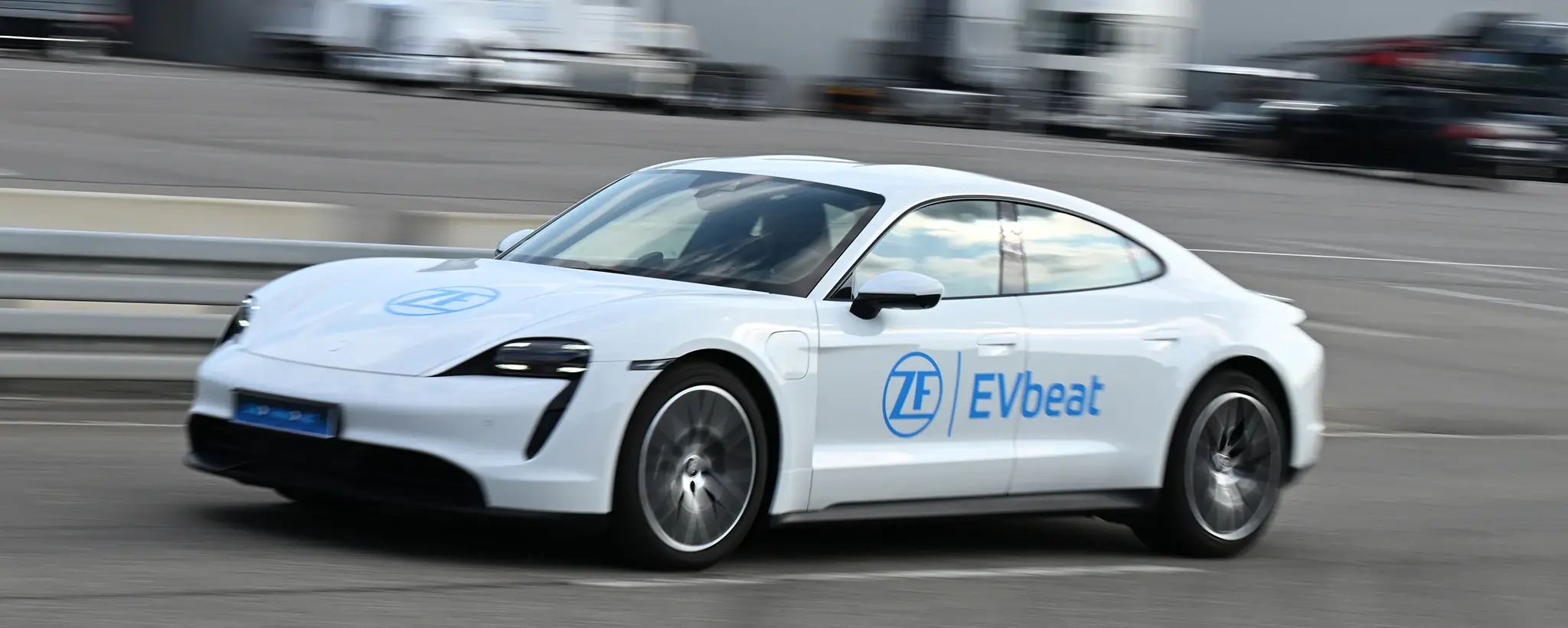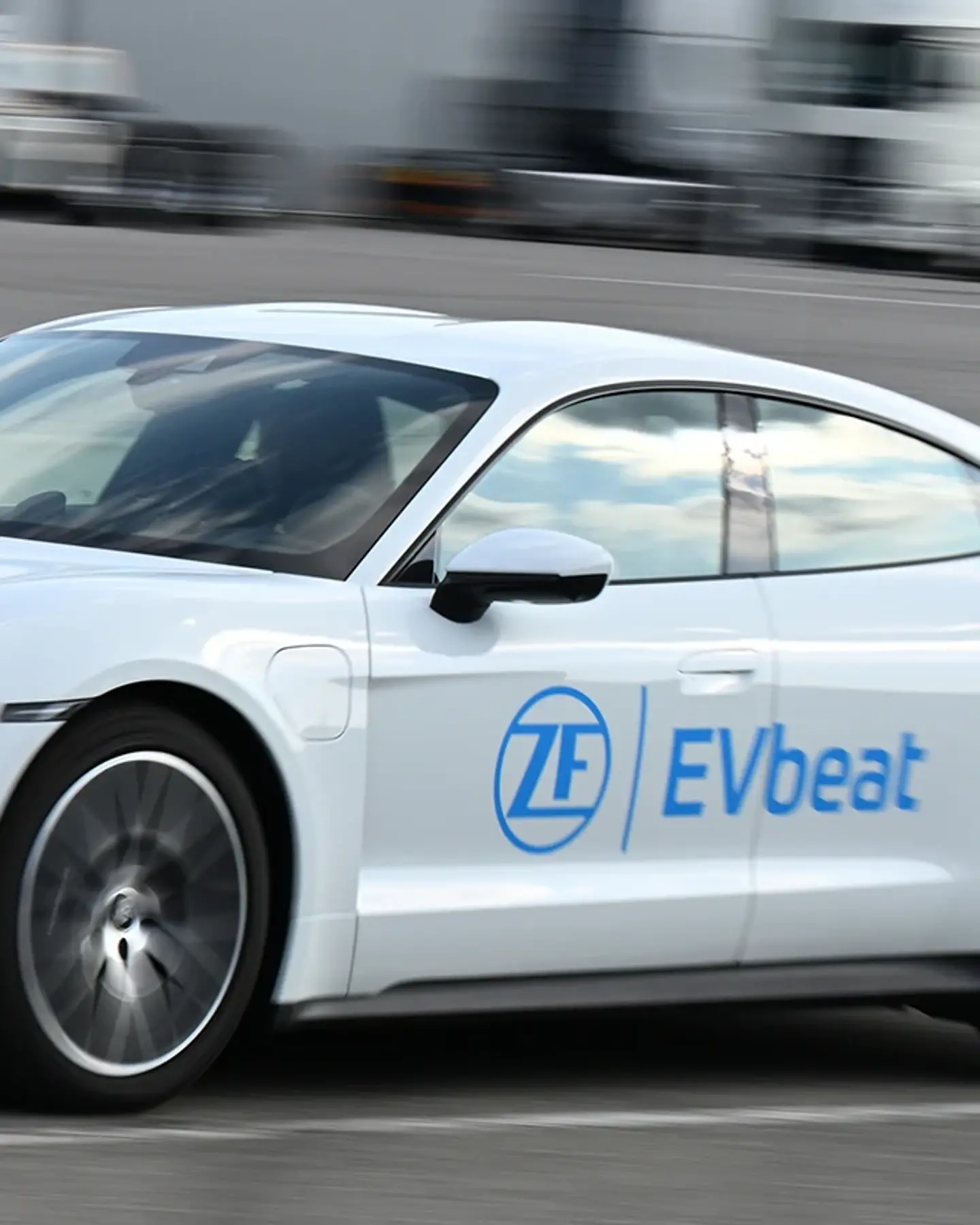

Torque Champion
ZF's electric concept vehicle EVbeat combines many newly developed components to deliver an ultraefficient and very compact overall system. This next-generation electric drive technology also meets the Group's sustainability requirements.
Avarice is really not a desirable human trait, but maximum economy is more than welcome with electric mobility. ZF's new electric concept vehicle EVbeat therefore gets a resounding two thumbs up. It outclasses today's electric drive solutions when it comes to power yield. This is most apparent in increasing the range in winter real-world operation by up to a third. But ZF developers wanted more. EVbeat, the demo car with the ultra-compact next generation electric drive, should also be a model of sustainability when it comes to the use of materials. Responsible for the small size of the drive are the technical innovations.
Dr. Otmar Scharrer is excited to share the details: "Our technology prototype, for example, does not need any heavy rare earths for the electric motor", says the Head of Development for Electrified Powertrain Technology at ZF, adding: "The reduced number of components and the reduction in system weight of the electric drive enhance sustainability on two fronts – in production and operation."
Driveline Reenvisioned
Sounds good? Let's take a look at the details. As already mentioned, the developers have made many adjustments. Their approach is to combine innovative electric drive components into an overall system. Let's start with the heart of the vehicle, the electric driveline. This 800-volt drive is called EVSys800. This compact, modular drive system consists of an electric motor, reduction drive and power electronics based on silicon carbide.

EVSys800 is a remarkably compact, modular electric drive system.
In the EVbeat, an EVSys800 works on the rear axle with a maximum torque of 5,200 newton meters and a continuous moment of 2,850 newton meters. The peak and continuous output of the electric drive system is 275 and 206 kilowatts respectively. With a total weight of 74 kilograms, EVSys800 is about 40 kilograms lighter than ZF's latest 800-volt volume production drive and, at 70 Nm/kg, delivers a new benchmark value in terms of torque density. In 2026, ZF will launch the first modules of this new drive on the market.
Very Cool: New Concept for Cooling and Winding
With the EVSys800, ZF relies for the e-motor on a new cooling concept and winding technology developed in-house. For cooling purposes, oil flows around the copper rods in the electric motor, absorbing the heat directly where most heat is generated during operation. This highly efficient cooling enables higher performance – with the same weight and installation space. The more efficient cooling technology eliminates the use of heavy rare earths in electric motor production. The braided winding technology developed in the Group also enhances efficiency and sustainability. It is a further development of the so-called wave winding. "Our braided winding technology cuts installation space and copper by ten percent. Compared to conventional approaches, the winding head alone is reduced by around 50 percent," explains Scharrer, Head of Development.
New Directions in Power Electronics and Transmission Technology
The inverter of the E-Drive was fundamentally redesigned. In the process, all major assemblies were revised. Significant improvements were made to the electromagnetic compatibility, power modules and capacitors in terms of installation space, weight and sustainability. On the mechanical side, a new reduction drive with a coaxial design ensures that weight and installation space requirements are reduced without compromising efficiency, noise and vibration development. The coaxial reduction drive transmits the drive forces of the electric motor via two integrated planetary gearsets. These gearsets not only generate the desired axle ratio, but also assume the fully integrated differential function.

Smaller, lighter and very efficient: ZF’s new coaxial reduction drive of the EVSys800.
Connecting Drive and Cloud
As important as the characteristics of the hardware systems are for the vehicle's sustainable operation, it is the drive software that optimally orchestrates these systems in the vehicle. ZF has developed Software for Powertrain (SW4PT) for this purpose. It not only networks all vehicle systems relating to the drive, but also creates the connection to the cloud for further additional services. "Software for Powertrain alone allows us to increase the efficiency of the drive by another six percent," explains Scharrer.
How does it work? Since the efficiency of an electric motor depends on its thermal operating points, it is important to always keep these in the optimum range: At low speeds and with high torque requirements, the optimum thermal operating point is very low. In contrast, high temperatures are no problem at high speeds with low torque requirements.
Software for Powertrain can proactively derive the optimal operating points from the individual driving profiles and prepare the system accordingly. SW4PT "learns" the driver's behavior; it can anticipate the probability for individual driving profiles by accessing the cloud. For example, air conditioning and system cooling are reduced if the system recognizes a previously driven short route. The assistance system also uses this data to provide the driver with direct tips on how to use the electric drive efficiently. It may, for example, instruct the driver to take their foot off the accelerator pedal well before a speed limit and slow down using the recuperation function.





